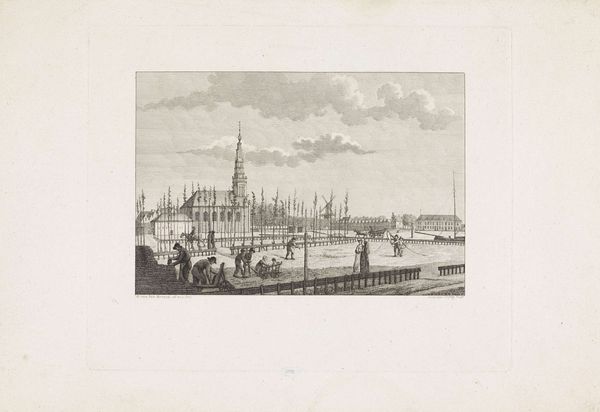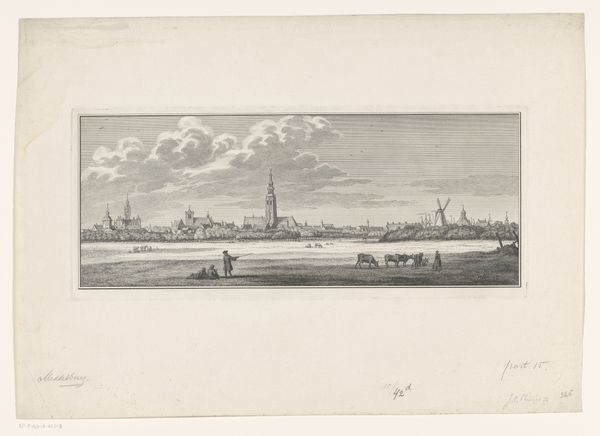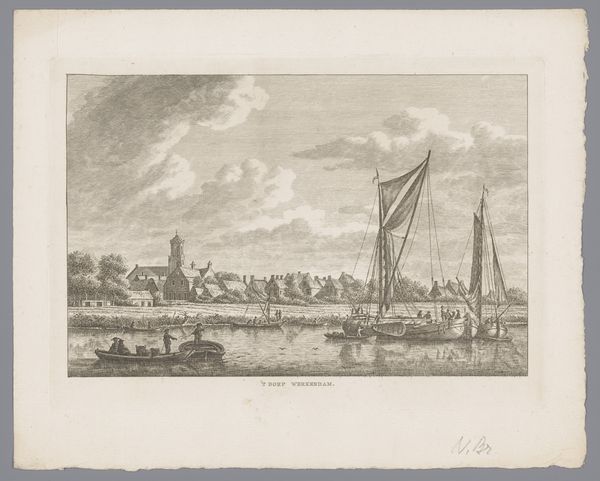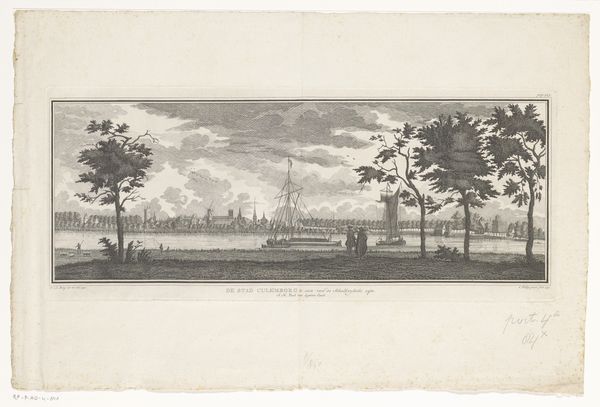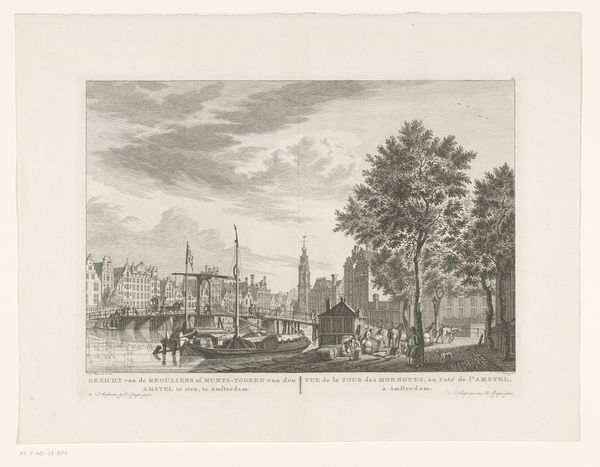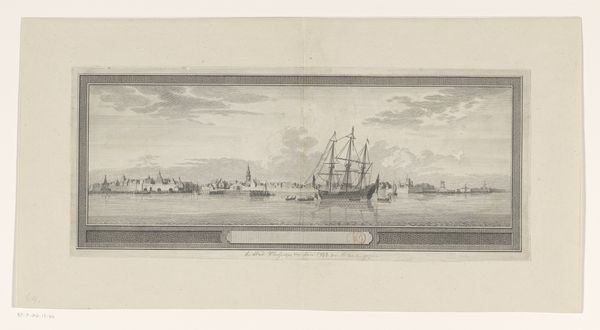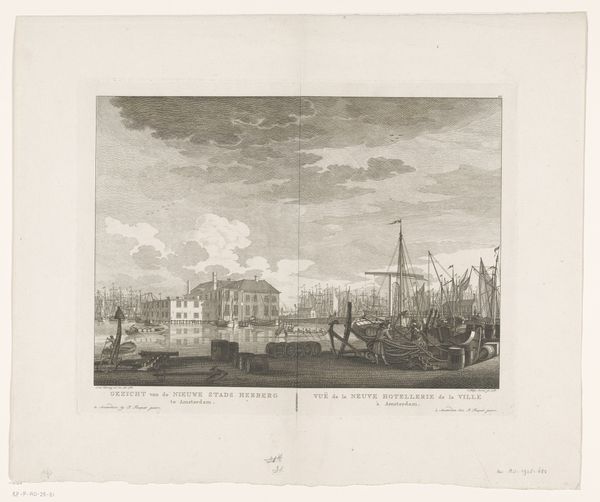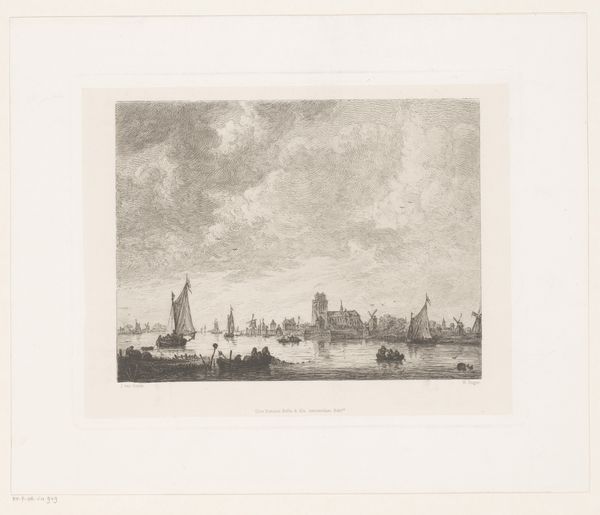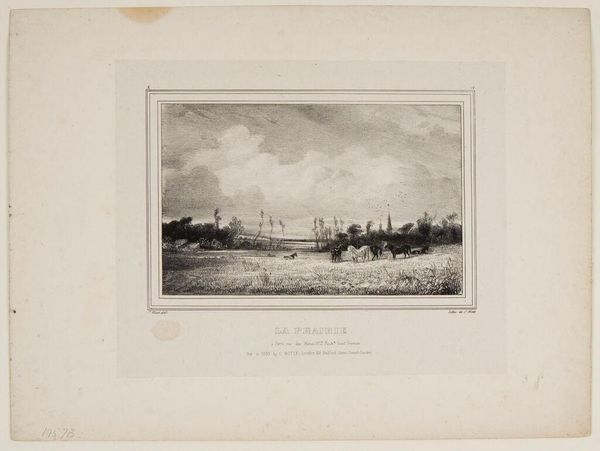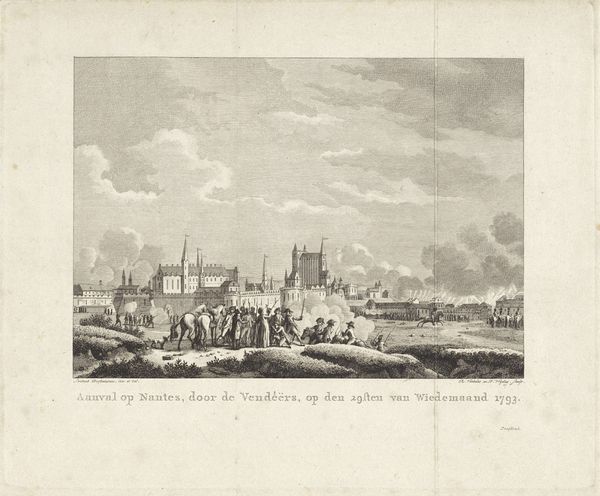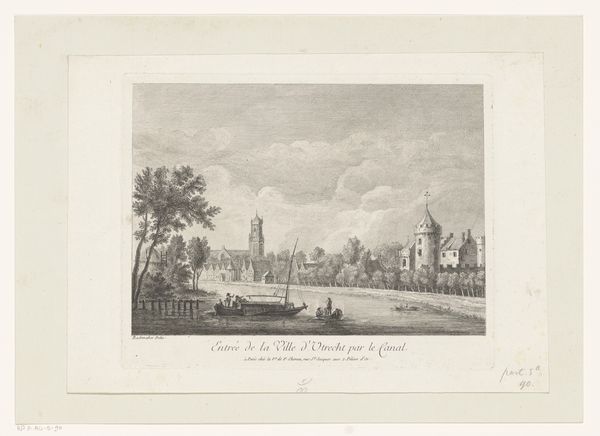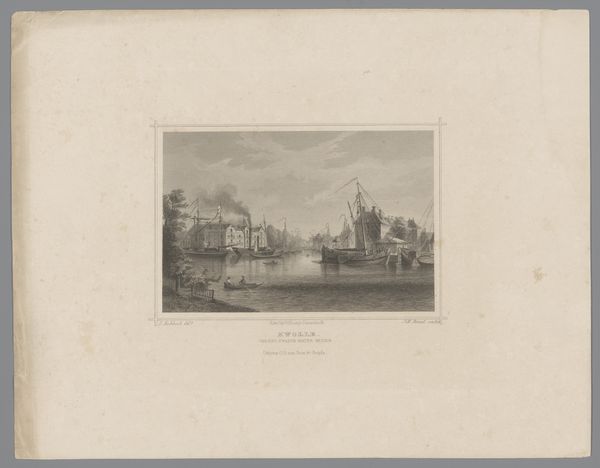
print, engraving
#
aged paper
#
dutch-golden-age
# print
#
old engraving style
#
landscape
#
line
#
cityscape
#
engraving
Dimensions: height 135 mm, width 190 mm
Copyright: Rijks Museum: Open Domain
Curator: Here we have Hendrik Spilman’s “Gezicht op Nijkerk,” an engraving, placing us somewhere between 1742 and 1784. The artwork's presently held in the collection of the Rijksmuseum. Editor: It's quite serene. The linear quality lends itself to a calm depiction of what appears to be everyday life. The use of line emphasizes the quaint nature of the village, a kind of visual harmony. Curator: Spilman was, in essence, documenting the social landscape of the Dutch Golden Age. Notice how the towering church and modest figures coexist, underscoring the societal emphasis on religious life influencing the daily routines of merchants and laborers. The artist portrays a time deeply rooted in mercantile culture, subtly referencing power structures through placement and size. Editor: I wonder, considering the prominence of the church, what other power dynamics were in play during this time? Was the village primarily a religious or trading hub, and how might this image obscure certain truths by favoring certain ideals? Are the ordinary people near the water shown heading toward religious gatherings, commerce or, quite simply, to work? Curator: Good questions. Examining the social undercurrents allows us to view the city as not only a visual document, but also as an assertion of particular beliefs, like those of religious importance. Considering the role of women in the marketplace versus in religious service might shift the balance of perceived importance in this frame. Editor: Exactly. Perhaps considering it through a gendered or economic lens destabilizes a seemingly bucolic, "golden age" vision, acknowledging unrepresented individuals as crucial to our perception. What we choose to see—or choose to omit—creates a political interpretation. Curator: It makes you reconsider what “landscape” even meant in that time. Thanks for shedding a contemporary eye on it. Editor: Always happy to dismantle a historical frame, or two.
Comments
No comments
Be the first to comment and join the conversation on the ultimate creative platform.
